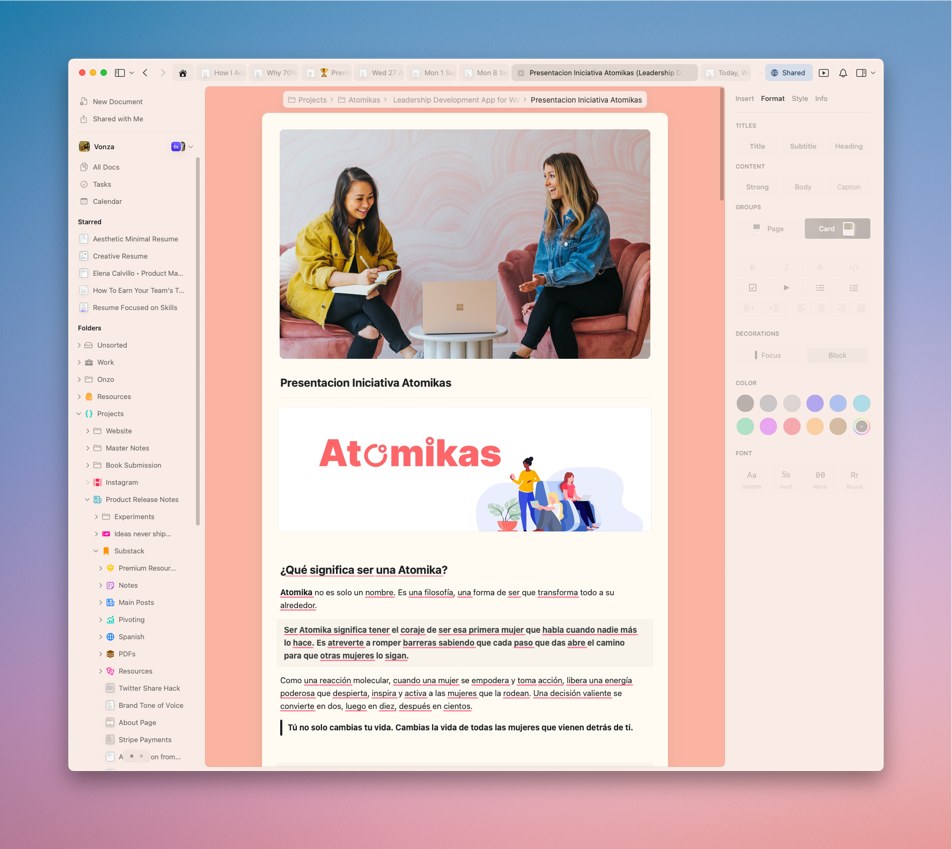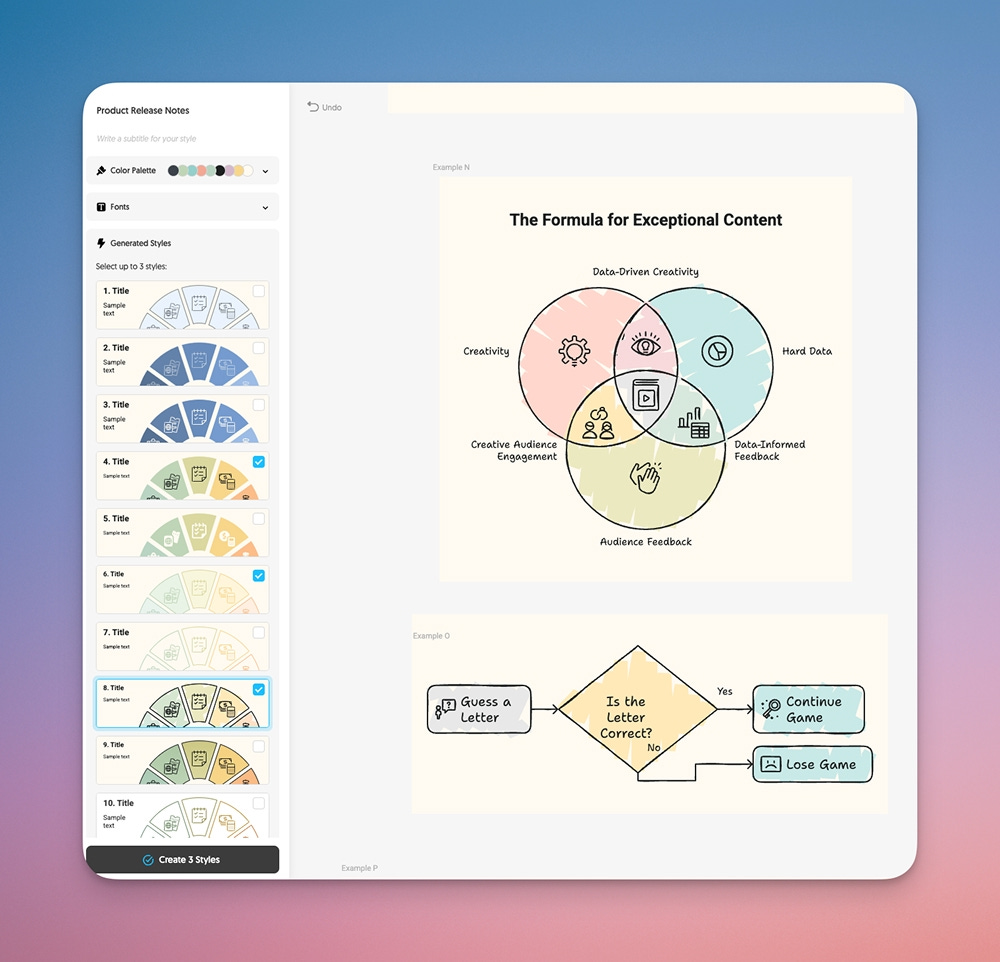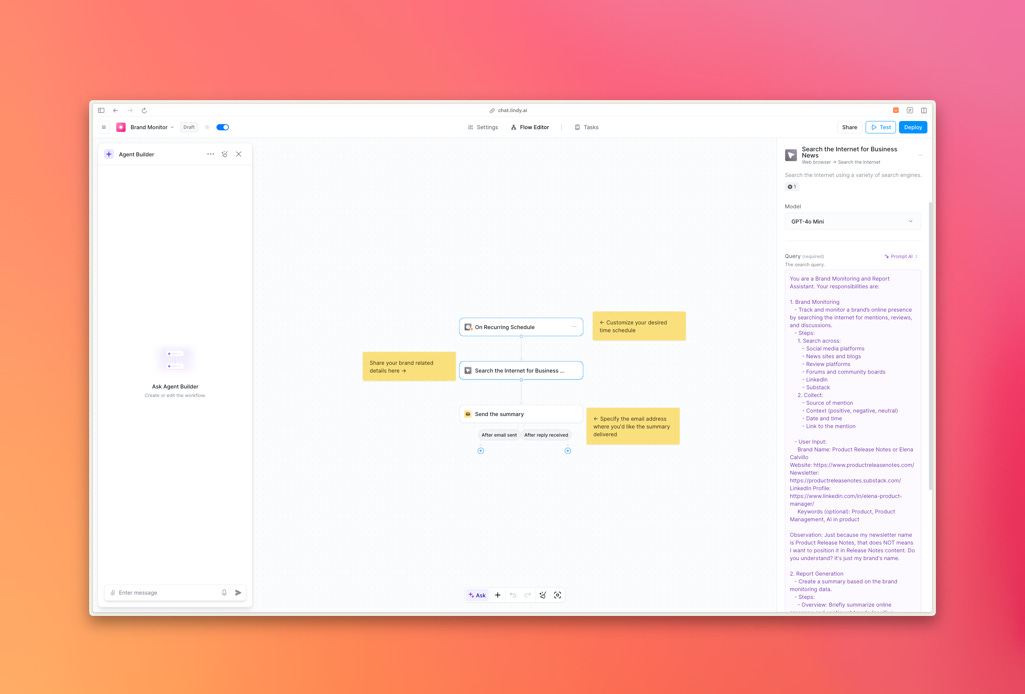From Drowning in Documentation to AI-Powered PM
A sneak peek into the AI tools that helped me reduce 15 hours of intense product management work and now run my life, and you can do too.
Full transparency: Some of the tools mentioned in this article are sponsors of ProductReleaseNotes.com. However, every tool discussed is one I genuinely use in my daily workflow and would recommend regardless of sponsorship status. Each tool was chosen because it solved a specific problem in my real life, not because of any commercial relationship.
I wasn't trying to become an AI evangelist, I swear! I was just drowning between product management work, life and my newsletter but also intentional growth until everything changed for good.
Some time ago, I was that product manager who spent weekends catching up on documentation, evenings researching competitors manually, and late nights trying to write newsletter content that didn't sound like everyone else's. In a typical day, my washing machine broke, I needed to compare automatic litter boxes for my cats, and I had three PRDs due while trying to keep up with architects discussing technical concepts I barely understood.
Then I discovered something that changed everything: AI wasn't just a work tool. It could be a life tool.
I'll show you how I am using AI in all my life aspects:
Work 💻
From Technical Confusion to Strategic Clarity
Product Experiments: From Idea to Prototype in Minutes
Life 🐈🐈⬛
From Endless Google Searches to Instant Answers
Newsletter 📝
From Content Struggle to Automated Distribution
Personal Growth 🪴
From Information Overload to Curated Learning
The Tools That Actually Stuck 🧰
The Breaking Point That Started Everything
The moment of truth came during a particularly brutal week. My newsletter was due, I had a complex requirement to analyze and a backlog to clean up, stakeholders were asking for competitive analysis that would take days, and my bathroom needed fixing. Oh, and did I mention my cats were destroying my plants because their current litter setup wasn't working?
I was spending 60% of my time on tasks that felt administrative rather than strategic. Writing took forever because I'd second-guess my English as a non-native speaker. Research meant diving down Reddit rabbit holes for hours. Creating diagrams for stakeholder presentations required learning design tools I didn't have time to master (and I use PowerPoint, yeah).
That's when I started experimenting with AI not just for work, but for everything.
My Accidental AI Transformation Across My Life Areas
What happened next genuinely surprised me. AI didn't just solve one problem: it created a comprehensive system that enhanced every part of my life. Let me break down how I accidentally built an AI-powered workflow that spans work, personal life, newsletter creation, and continuous learning. 🤓
Work 💻
From Technical Confusion to Strategic Clarity
💾 The old way: Spending hours trying to understand complex technical concepts, manually creating user stories, and getting lost in architectural discussions.
🤖 The AI way: Now I use Perplexity for deep technical research for documentation and analysis. When architects start discussing system design, I can quickly research the concepts and contribute meaningfully to conversations instead of nodding along confused.
⭐️ Specific example: Last month, our team was debating microservices architecture. Instead of staying quiet, I used Perplexity to quickly understand the trade-offs and came back with informed questions about scalability concerns. The lead architect actually thanked me for raising points they hadn't considered, to his words “I thought nobody was following what I was saying”.
Note: PMs this is critical for building trust with every engineer, if you are not talking the same language, no good will come out from those calls.
Product Experiments: From Idea to Prototype in Minutes
💾 The old way: Product ideas would sit in my backlog for months. Testing concepts required wireframes, design mockups, development resources, and weeks of back-and-forth. Most ideas never made it past the concept stage.
🤖 The AI way: Now I use Lovable for rapid product experimentation and prototyping. What used to be a multi-week process now happens in a single afternoon.
⭐️ Real example: I recently built a product management skills quiz in 30 minutes. I used Perplexity's Deep Research to identify the right questions based on different PM seniority levels, then generated a prompt for Lovable to create a fully functional React application with TypeScript logic.
I Built My Own App With AI, Here Is What I Learned
Honestly, I've been kicking around AI content for months now, reading about tools, bookmarking articles. Then I had one of those moments.
The result wasn't just a mockup, it was a deployable app with working logic, mobile-responsive design, and proper user interactions. I could immediately share it with colleagues and get real feedback on both the concept and the execution.
Why this changed everything for me: Product experiments are now almost zero-risk propositions. If an idea doesn't work, I've only invested a few hours instead of weeks. If it does work, I have a functional prototype to validate with users and stakeholders.
The compound effect: I'm now testing more product concepts than before, while doing them on solo mode before had me spending hours and hours on the technical side of it. Some become internal tools inside my company, others inform feature decisions, and a few might even become standalone products? Who knows. What I know is that the speed of experimentation has fundamentally changed how I think about product development.
Beyond just prototyping: Lovable has become my go-to tool for creating internal tools that are not robust, testing user flows, and even building throwaway apps to solve specific problems.
When you can build something functional in minutes, the barrier between "having an idea" and "testing that idea" essentially disappears.
Life 🐈🐈⬛
From Endless Google Searches to Instant Answers
💾 The old way: Spending Saturday mornings researching everything from appliance repairs to pet products, often getting overwhelmed by conflicting information.
🤖 The AI way: I now use Perplexity for personal research on everything. When my washing machine broke, I got a comprehensive troubleshooting guide in minutes and who were the top rated repair services around the neighborhood. When comparing automatic litter boxes for my cats, I got detailed comparisons with pros, cons, and user reviews synthesized from multiple sources of available products in Amazon.
The time savings are remarkable: What used to take 2-3 hours of research now takes 15 minutes, and I get better, more comprehensive information.
Newsletter 📝
From Content Struggle to Automated Distribution
💾 The old way: Writing a weekly post felt overwhelming. I'd research for hours, write slowly (second-guessing my English), and manually share content across platforms.
Actually, here’s a post from 2023 (long ago!) about my publication process. Some tools and steps haven’t changed at all, but there has been a lot of improvements!
An Inside Look At My Publication Process: Detailed Walkthrough
There’s a good reason why all of us consume content, most of the times, is to seek for an answer to a problem we’re currently facing. When it comes to delivering valuable content, newsletters have proven to be one of the most effective methods.
🤖 The AI way: I've built a complete content creation and distribution system:
Perplexity for deep research ensures my articles have accurate data and current statistics
Craft.do AI helps with idea generation and reformatting my thoughts into structured content
DeepL resolves any language doubts since English isn't my first language
Napkin.ai transforms my concepts into professional diagrams in seconds
Lindy.ai automatically repurposes my Substack content for LinkedIn and Substack Notes
The compound effect: I now publish more consistently, with higher quality content, and reach more platforms without additional manual work.
Personal Growth 🪴
From Information Overload to Curated Learning
💾 The old way: Endless scrolling through Reddit threads and Stack Overflow posts to understand new concepts, or spending money on courses I didn't have time to complete.
🤖 The AI way: I use Perplexity to find the best resources for any topic I want to learn, get concept mapping to understand complex subjects without a teacher, and monitor new developments in my field.
Real impact: Last quarter, I wanted to understand AI product management trends. Instead of reading dozens of articles, I used Perplexity to synthesize the latest research, identified the key frameworks, and even found specific courses that matched my learning style and schedule.
And this data helped to build a comprehensive article about the salary impact that product managers are experiencing around the world when learning AI skills.
The Tools That Actually Stuck 🧰
Here's what makes my AI toolkit different from the dozens of tools I tried and abandoned: each tool solves a specific problem in my real workflow, not hypothetical ones.
The Core Stack:
For Research and Analysis: Perplexity - This is my Swiss Army knife. Whether I'm analyzing competitors, researching technical concepts, or finding the best automatic litter box 🤭, it provides sourced, comprehensive answers that save me hours.
For Writing and Idea Development: Craft.do AI - Perfect for transforming scattered thoughts into structured content. It understands context and helps me organize ideas without losing my mind.
For Language Confidence: DeepL - As a non-native English speaker, this removes my language anxiety. I can write naturally and refine with confidence.
For Visual Communication: Napkin.ai - From idea to professional diagram in seconds. No more struggling with design tools when I need to explain complex concepts to stakeholders.
Since so many of you ask about this one specifically over email, I managed to get a special discount code: PRNOTES for 20% off your first time purchase, for the first 50 friends to get this great deal!
For Workflow Automation: Lindy.ai - The orchestration layer that connects everything. My content automatically flows from Substack to LinkedIn and Notes without manual intervention.
Impact Across My Life
Let me share specific numbers because productivity claims without data don't mean much!
Work Efficiency:
Documentation time reduced by 65%: Complex PRDs now take 2 hours instead of 6 or more.
Research tasks compressed by 70%: Competitive analysis happens in focused 90-minute sessions instead of full days.
Meeting preparation cut by 80%: I arrive informed about technical discussions instead of hoping to catch up and ask a bunch of questions that can irritate some engineers!
Personal Life:
Decision-making time for purchases reduced by 85%: From 3 (or more) hours of research to 15 minutes.
Learning efficiency improved by 60%: I absorb new concepts faster with AI-assisted explanation and concept mapping.
Newsletter Productivity:
Content creation time decreased by 55%: From 8 hours per week to 3.5 hours (huge part of this time was actually just generating graphics! 🤯 Napkin.ai has simplified this for me dramatically. so really make use of the special code now!)
Cross-platform distribution automated 100%: Zero manual posting across LinkedIn and Substack Notes.
Content quality improved measurably: More data-driven articles with verified statistics.
The compound effect: I've reclaimed approximately 15 hours per week that I now spend on strategic thinking, relationship building, and activities I genuinely enjoy.
The Future of Product Management Isn't Choosing Sides
Human judgment remains essential. AI accelerates my research, improves my writing, and automates my workflows, but I still make the strategic decisions about what to research, what to write about, and how to prioritize.
The goal isn't to become AI-dependent; it's to become AI-enhanced.
The most successful leaders will be those who thoughtfully integrate AI to handle administrative tasks while focusing human intelligence on strategy, empathy, and innovation.
My accidental AI transformation taught me that the real power isn't in any single tool but actually it's in creating a connected system that amplifies your natural strengths across every area of your life.
Whether you're struggling with documentation, drowning in research, or just trying to balance professional growth with personal responsibilities, the question isn't whether AI can help. The question is: what's the one problem consuming the most time in your week, and which AI tool can solve it today?
Start there. The transformation will happen gradually, then suddenly, just like mine did.









I'm going to check out those tools! They seem super helpful.
Thank you, this was a great read. Awesome.
You’ve optimized the “how”—documentation takes 2 hours instead of 6, research happens in 90 minutes instead of days. This Is Impressive. 🌸But nowhere in this piece do you address one other fundamental question: Are you documenting the right products? Researching the right competitors? Building prototypes for problems worth solving?
The real power of AI isn’t making you faster at what you’re already doing—it’s creating space to ask whether you should be doing those things at all. You’ve reclaimed 15 hours. The critical question isn’t how did you do it? but what are you doing with that time?